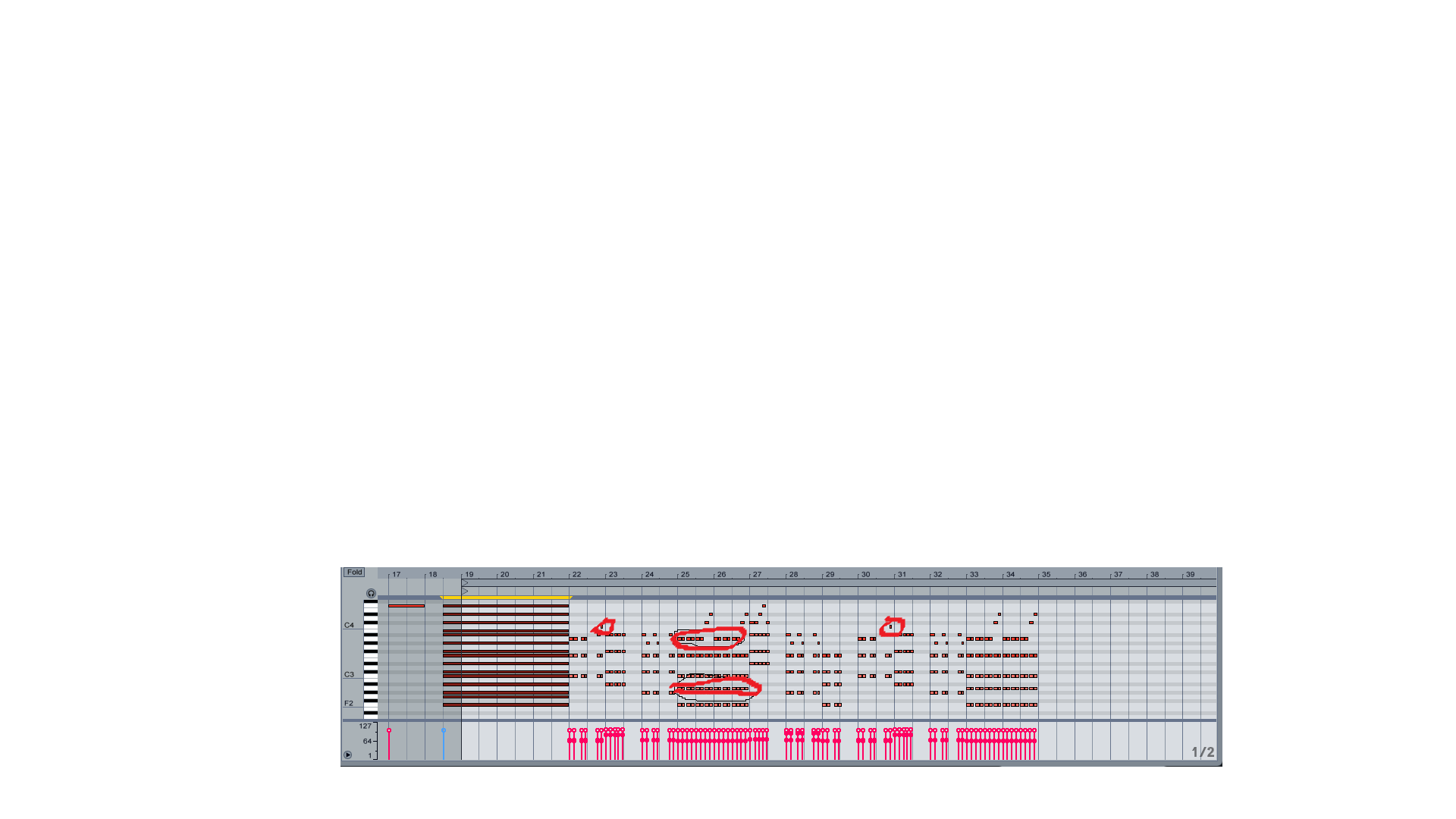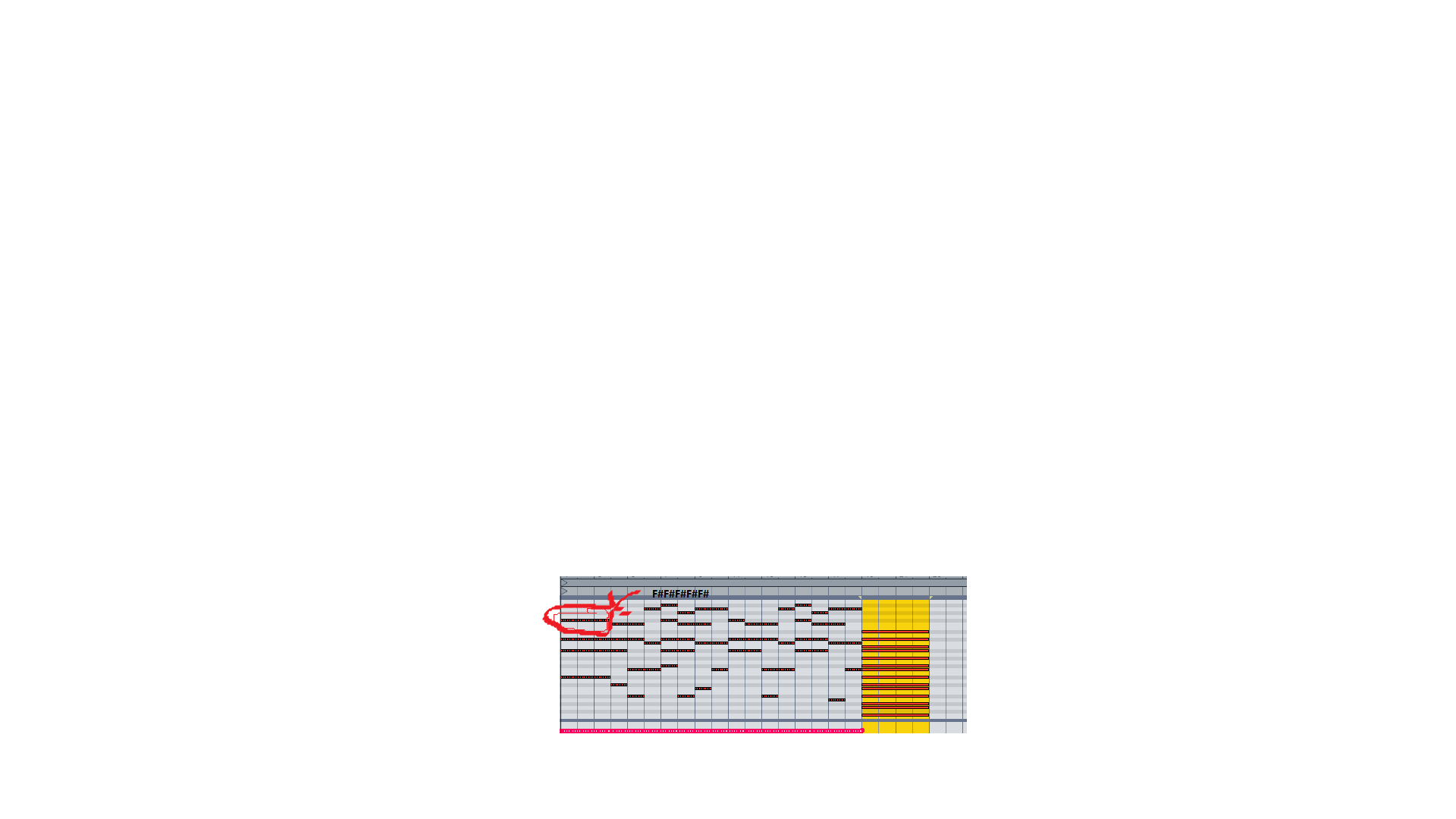note that I did this by listening to the original track all the way through once - did not see your pics or listen to the tutorial; however you have made an assumption about this being in D[sup]#[/sup]m/E[sup]b[/sup]m which is unfounded. The key to this is understanding that the F[sup]7[/sup] chord (F-A-C-E[sup]b[/sup]) is chord V and that the movement to either G[sup]b[/sup] or E[sup]b[/sup]m is that of the deceptive cadence in the minor.
This allows me to assert that fundamentally this piece is in B[sup]b[/sup]m/A[sup]#[/sup]m, I will use B[sup]b[/sup]m for the majority of the following discussion as it is easier to understand than A[sup]#[/sup]m; the functional harmonic id is the same regardless of which key center I use
In B[sup]b[/sup] natural minor we have the following notes B[sup]b[/sup]-C-D[sup]b[/sup]-E[sup]b[/sup]-F-G[sup]b[/sup]-A[sup]b[/sup]-B[sup]b[/sup]
In B[sup]b[/sup] harmonic minor we have the following notes B[sup]b[/sup]-C-D[sup]b[/sup]-E[sup]b[/sup]-F-G[sup]b[/sup]-A-B[sup]b[/sup]
there are three fragments of harmonic movement
F[sup]#[/sup]-C[sup]#[/sup]-A[sup]#[/sup]m-F[sup]7[/sup] || G[sup]b[/sup]-D[sup]b[/sup]-B[sup]b[/sup]m-F[sup]7[/sup] || b[sup]b[/sup]/a[sup]#[/sup]: [sup]b[/sup]VI-[sup]b[/sup]III-i-V[sup]7[/sup]
F[sup]#[/sup]-C[sup]#[/sup]-F[sup]7[/sup]-F[sup]7[/sup]/A || G[sup]b[/sup]-D[sup]b[/sup]-F[sup]7[/sup]-F[sup]7[/sup]/A || b[sup]b[/sup]/a[sup]#[/sup]: [sup]b[/sup]VI-[sup]b[/sup]III-V[sup]7[/sup]-V[sup]7[/sup]/#7
D[sup]#[/sup]m-C[sup]#[/sup]-A[sup]#[/sup]m-F[sup]7[/sup] || E[sup]b[/sup]m-D[sup]b[/sup]-B[sup]b[/sup]m-F[sup]7[/sup] || b[sup]b[/sup]/a[sup]#[/sup]: iv-[sup]b[/sup]III-i-V[sup]7[/sup]
F[sup]#[/sup]/G[sup]b[/sup] ~ F[sup]#[/sup]-A[sup]#[/sup]-C[sup]#[/sup]/G[sup]b[/sup]-B[sup]b[/sup]-D[sup]b[/sup]
C[sup]#[/sup]/D[sup]b[/sup] ~ C[sup]#[/sup]-E[sup]#[/sup]-G[sup]#[/sup]/D[sup]b[/sup]-F-A[sup]b[/sup]
A[sup]#[/sup]m/B[sup]b[/sup]m ~ A[sup]#[/sup]-C[sup]#[/sup]-E[sup]#[/sup]/B[sup]b[/sup]-D[sup]b[/sup]-F
F[sup]7 [/sup]~ F-A-C-E[sup]b[/sup]
F[sup]7/[/sup]A ~ F-A-C-E[sup]b[/sup] with an A in the bass
D[sup]#[/sup]m/E[sup]b[/sup]m ~ D[sup]#[/sup]-F[sup]#[/sup]-A[sup]#[/sup]/E[sup]b[/sup]-G[sup]b[/sup]-B[sup]b[/sup]
i.e. the F[sup]7 [/sup] is a chord from the harmonic minor whereas the rest of the chords are from the natural minor
I can write the whole progression out if you would like but you should be able to do it for yourself based on the above three fragments
trickiest part is the fact that each chord is played with a 3-3-2 pattern over two bars of 4/4, which some folks might interpret as 3/4-3/4-2/4 instead




